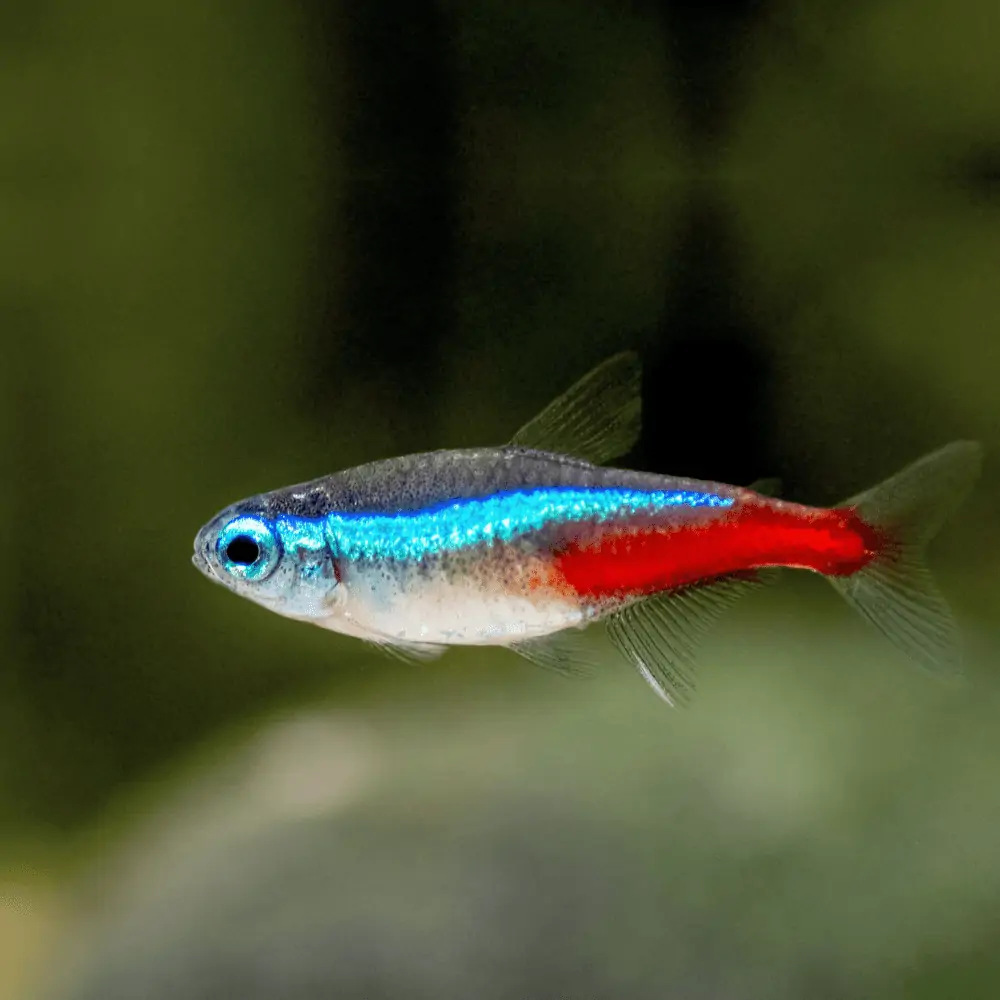The Tetra of Characin group are part of the huge Sub-order of fish Characoidei, which consists of 14 Families including Characidae. This family consists of many of the more popular Tetras including Neon Tetra (Paracheirodon innesi).
Natural Range
This species originate from subtropical and tropical areas of Africa and South America, typically from tropical rainforest rivers and streams. Their origin stems back to when the African and South American continents were joined in one land mass.
Maximum Size and Longevity
Range from 2 – 4cm. Longevity ranges from around 1 year for some small species to several years.
Water Quality
The aquarium conditions required by these fish depend on their location of origin and cannot be generically listed. However, most Tetras like neon tetra, purchased at aquarium shops are of South American origin and will do well in water that is soft and slightly acid.
Temperature: 20C – 26C
pH: 6 – 7. 0
General Hardness: 50 – 150 ppm
Feeding
Many Tetras are omnivorous and will readily take most types of aquarium foods used in the hobby. Due to the small size of many species, ensure that food particles are not too large for their small mouths. We recommend feeding a small dry pellet and Frozen Brine Shrimp to provide a balanced diet.
Compatibility
Neon Tetras are best kept in large schools (minimum 6 in the group) and different species can generally be kept together with few problems. Tetras will also mix readily with a range of species and are generally an ideal community fish – however as many species are relatively small, it is not a good idea to mix them with species that grow large such as Oscars.
Colour and Varieties
From the tip of its nose to the adipose fin, the neon tetra has a bright neon blue stripe. It is believed this bright stripe makes them more readily visible to each other in blackwater conditions. nBelow the blue stripe, the neon tetra sports a white-silver belly. Past the belly, a bright red stripe extends all the way to the tail. Like other colorful fish, the bright colors of the neon tetra will fade at night when it is resting, when it becomes alarmed or when it is ill.
Sexing
Many species show no sexual dimorphism at all making sexing of the fish difficult. As is common with most species, females carrying eggs can often be seen as fish with a distended abdominal area. However, in some species traits such as longer fins, more elaborate colours or patterns and size differences can be used to tell male from female. Tank breeding of Tetras is often problematic due to their particular needs for water quality; however, many advanced hobbyists are able to breed most of the common species. Most commercial Tetra species are now farmed throughout Asia and even in indoor facilities in Europe, USA and Australia.
General Information
Tetras are the most common type of fish found in South America after catfish. Their name is commonly used for a large group of fish characterised by the presence of a small adipose fin between their dorsal and caudal fin. The term Tetra is actually not a taxonomic grouping, as many unrelated fishes from differing families have been commonly called Tetras. Tetras are the second most commonly kept fish in community tank setups, after livebearers. They are popular because of their vibrant colours, manageable size, mild behaviour and schooling habits.
Source: Aquarium Industries
